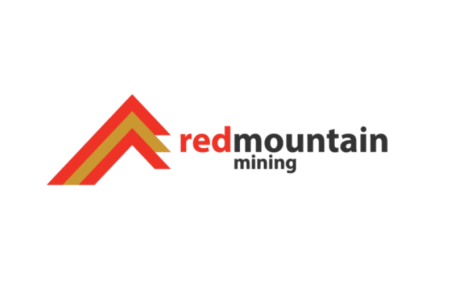Mineral Resource Estimate Updated for the Cowboy State Mine Area at Halleck Creek
AI’s Infrastructure Boom: Risks, Legal Insights and Innovation






Silicon Valley’s tech giants are pouring hundreds of billions of dollars into artificial intelligence (AI) infrastructure this year, a commitment that has been met with growing anxiety from shareholders.
This massive investment, reminiscent of the dot-com boom, has faced skepticism over its sustainability.
Market concerns were recently amplified after investor Michael Burry, who successfully bet against the US housing bubble, shorted tech shares and argued that AI hyperscalers are artificially inflating earnings by extending the useful life of costly equipment, a practice he termed “one of the more common frauds of the modern era.”
As investors weigh the promise of AI against the risks of inflated valuations and uncertain profitability, success will depend on grasping the strategic and legal dynamics of the AI infrastructure market, not just technological progress.
Overinvestment concerns in AI infrastructure
Drawing parallels between the current AI investment boom and the historic dot-com bubble, Ramos warned about the risk of overbuilding capacity without enough demand-driving applications.
“I’ve been worrying that we’re … building all this capacity, (but) there aren’t enough killer apps to use all the capacity that’s being built. What I worry (is that) we’re going to end up in the same place that we did in the boom,’ he said.
Formerly an engineer at the Boeing Company (NYSE:BA), Ramos provides technical insight on intellectual property (IP) licensing, portfolio growth and management. He leverages his experience in software and IT service transactions to advise clients on AI risk evaluation and help them develop workplace AI policies.
Ramos cautioned against overbuilding capacity without established demand, drawing lessons from the telecommunications bubble. He compared the fiber optic cable buildout of the past to the current construction of AI data centers and infrastructure, and described working extensively for companies involved in building out this capacity, only to see the market collapse when the anticipated demand failed to materialize.
“We did all these things technologically to get more capacity, and then it wasn’t needed. And all the investments that happened … it impacted my practice quite a bit,’ he noted.
While today’s enthusiasm is similar to what happened then, Ramos said a key difference is that today’s institutional investors are less willing to tolerate prolonged uncertainty without visible paths to profitability.
“Enterprise demand kind of works in the same way that it always did,” he explained.
“Most of my clients have not yet put a whole bunch of money into the next brand-new thing, because they want to make sure the next brand-new thing works and is going to be sold and maintained by a vendor who’s going to be around to do that. So there’s kind of a slower adoption than what you see on the consumer side,’ Ramos added.
Companies that look beyond hype and strategically balance investment with clear business cases will likely emerge strongest. Ramos advised leaders to consider succession and exit strategies in technology ventures early, underscoring that “the business lifecycle around AI is evolving quickly, and legal foresight is essential.”
Legal and regulatory considerations shaping AI infrastructure adoption
With technology evolving rapidly, Ramos emphasized that savvy businesses must assess AI-specific risks carefully, pointing to issues such as intellectual property infringement.
“Data privacy is a concern,” he said. “If you have an AI solution, and you are using it to solve problems that involve putting personal information into an LLM, can that LLM access that information to answer other people’s questions? And, if they can, there’s a potential that you have privacy breaches going on.”
Ramos advised businesses to consider where the value of AI adoption lies, and whether it comes with its own flaws.
He also highlighted that the landscape is currently highly fragmented, with no preemptive federal policy guiding AI development. As a result, states are establishing their own rules, creating a “patchwork” of regulations that increase compliance challenges as well as costs, a potentially major impediment to both innovation and infrastructure investments. All of this will shape how and where companies decide to develop and deploy AI solutions.
Strategic innovation in AI infrastructure
Ramos suggested that the buildout of AI infrastructure could prompt significant changes in how companies approach tech investment, noting that models could shift toward more flexible resource allocation rather than outright ownership, mirroring successful “capacity sharing” approaches from past technology cycles.
The emergence of new models and increased focus on energy efficiency could prompt significant changes in how companies structure their technology investments and strategies.
Ramos highlighted time sharing of GPU resources as a key emerging strategy to optimize costly AI infrastructure, drawing a parallel to historical time sharing in fiber optics as a model.
He explained that with GPUs currently utilized only 15 to 20 percent of the time, there is major potential for efficiency gains if companies share or lease compute resources when not in use.
Emerging business models that enable GPU time sharing represent promising avenues for value creation. For investors, this marks a shift toward more asset-light, scalable models in AI infrastructure.
A partnership between decentralized data platform Pundi AI and decentralized cloud computing provider Spheron Network exemplifies this strategy. Their collaboration addresses the problems of low-quality training data and the high costs of compute resources by providing verifiable, community-labeled datasets with on-chain provenance, packaged as tokenized digital assets that development teams can access securely and transparently.
The recent partnership creates an integrated pipeline from data to scalable, affordable compute, supporting decentralized AI development and directly addressing the inefficiencies and bottlenecks in current AI workflows.
On the compute side, Spheron Network offers decentralized and affordable GPU and CPU resources, enabling AI developers to rent compute power on demand rather than relying on costly fixed infrastructure.
This allows AI developers, especially startups and small teams, to run more experiments per dollar, avoid costly fixed infrastructure and scale compute resources flexibly based on their needs.
Investor takeaway
As capital floods into AI infrastructure, Ramos advised prudence coupled with innovation.
The stakes are high, with opportunities to reshape the technology landscape, but equally real risks underscoring the importance of legal and strategic guidance. For companies navigating these waters, careful planning around AI investments and corporate policies will be key to long-term success.
Securities Disclosure: I, Meagen Seatter, hold no direct investment interest in any company mentioned in this article.











